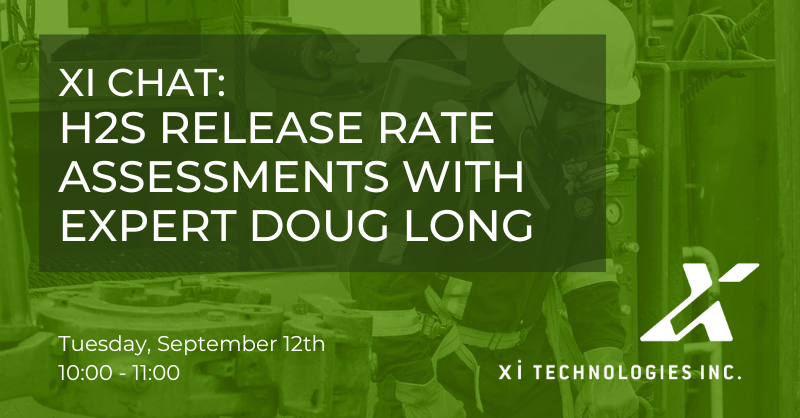Word to the Wise: Sour Gas Hot Spots
August 22, 2023
Each week, XI Technologies uncovers trends and insights using our enhanced data and software focused on the WCSB. If you’d like Word to the Wise delivered directly to your inbox, subscribe here.
In Alberta, prior to commencing drilling operations, operators are required to submit an H2S Release Rate Assessment to the Alberta Energy Regulator (AER), as outlined in Directive 056. This week, we have the opportunity to utilize our data to effectively emphasize the significance of thorough due diligence, not only to ensure compliance but also to prioritize the safety and well-being of the public.
AER lays out their requirements for an H2S release rate assessment in Section 7.7.15 of Directive 056: Energy Development Applications, explaining their reasoning with this statement:
The AER requires the applicant to conduct an H2S release rate assessment for each category C, D, or E well to ensure public safety when developing projects containing H2S gas. The H2S release rate assessment determines the minimum EPZ for the proposed project and dictates the minimum radius used in the applicant’s participant involvement program.
For decades, operators have navigated the challenges of addressing, strategizing for, and minimizing the potential impact of encountering sour gas in Western Canada. Thanks to the direction from the AER and available data and research resources such as XI’s H2SReports, industry professionals can take conscientious measures to accurately evaluate the risks associated with H2S exposure.
A look into the prevalence of sour gas wells in Alberta proves the necessity of this requirement. Using data pulled from XI’s H2SReports software, we see how common an issue H2S release potential can be when drilling throughout the WCSB:

This heat map shows where sour gas is most prevalent throughout Alberta and Northeastern BC. A deeper dive into the data reveals which fields have the most sour gas by well count and H2S concentration. According to the data from our H2SReports product, the fields with the hottest hot spots of sour gas are Crossfield East, Okotoks, Ricinus, Bullmoose, and Ricinus West, each with an average H2S concentration of over 21%.

If we look at the graphic below (Fig. 3) which operators are most experienced in high H2S concentration sour gas wells? The data below shows that Shell Canada Limited leads the board with Sinopec Daylight Energy Ltd. currently sitting second, replacing TAQA North Ltd. from last year. Collectively, they operate the most sour gas wells across the WCSB. At the same time, Northriver Midstream Inc. and CNOOC Petroleum North America ULC are the producing companies with the highest average H2S concentration among the sour wells they operate.

Diving into this data shows that the requirement to submit an H2S Release Rate Assessment to the AER is no mere bureaucratic task; rather, it is essential for safe risk mitigation. Sour gas wells are a common occurrence in our patch and pools can become sour as time passes. Because of this, reporting and preparing for H2S is a critical part of the drilling process in the WCSB every time you drill.
See all this data in our interactive dashboard.
Join us to learn about “H2S Release Rate Assessments” as we host industry expert Doug Long for a webinar.

When: Tuesday, September 12
Time: 10:00-11:00 am
Where: Zoom – Register here
XI Technologies offers services to reduce the complexity and expense in pre-licensing research and reporting. File accurate, complete H2S release rate analysis with H2SReports – an interactive console that guides you through the process, or let us help you further by having us prepare your report for you with our turnkey service, H2SComplete. Contact us today for more information or visit XI Technologies.